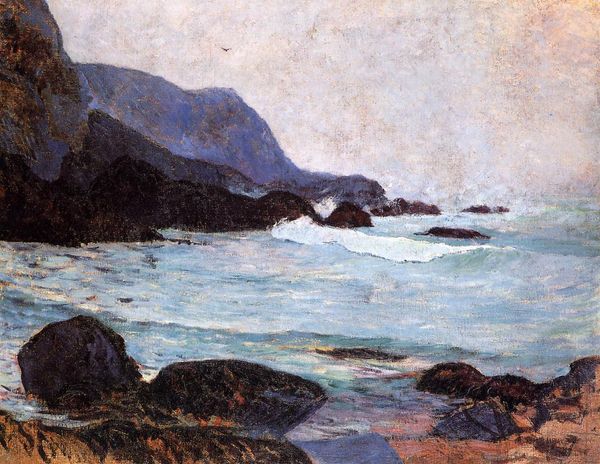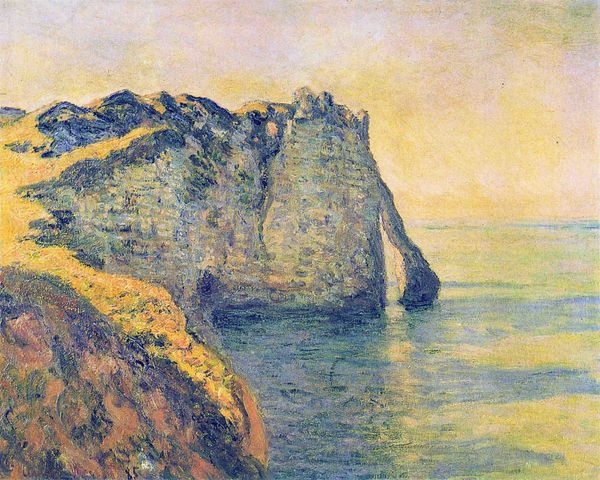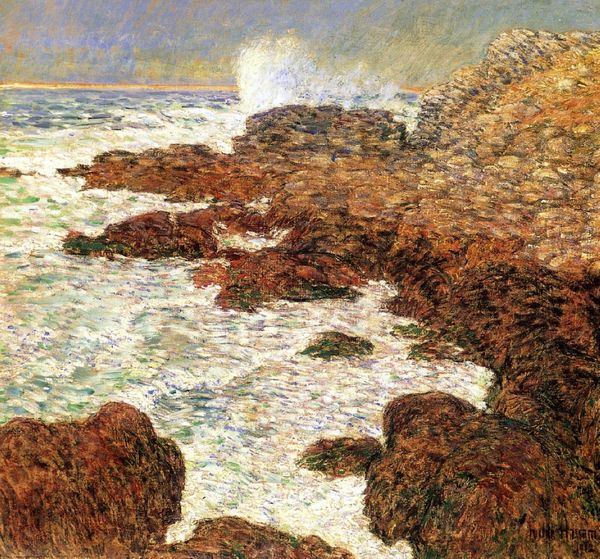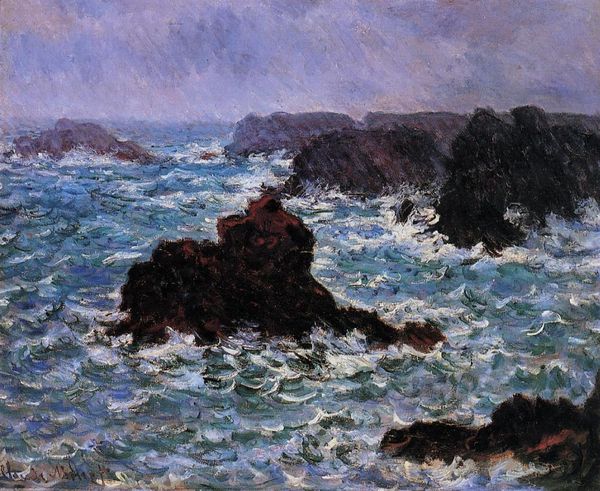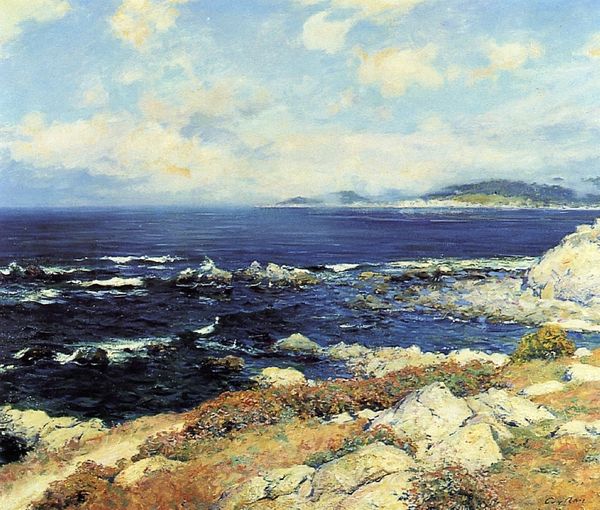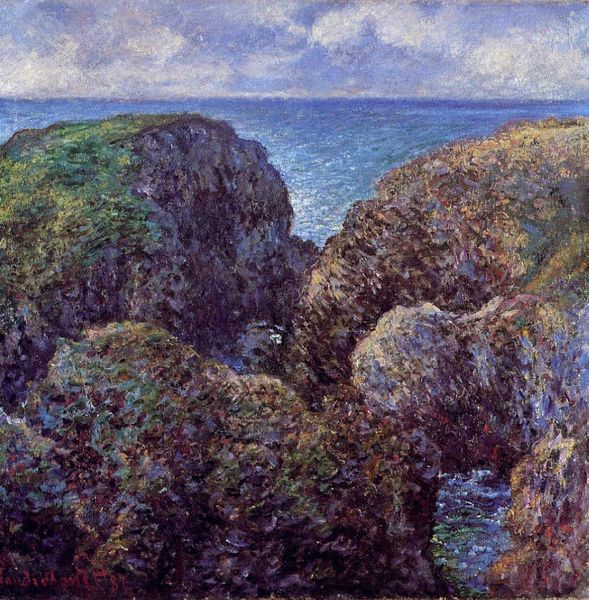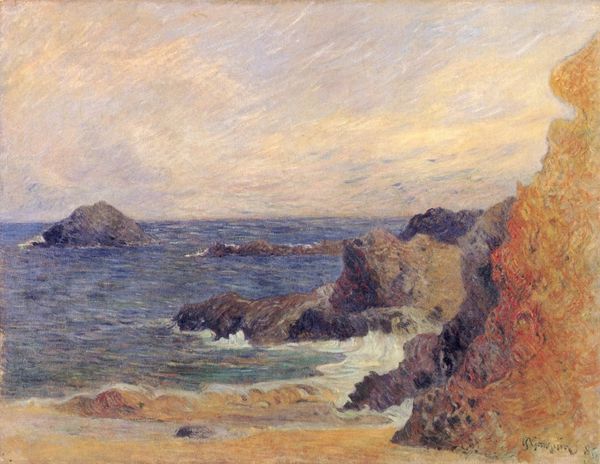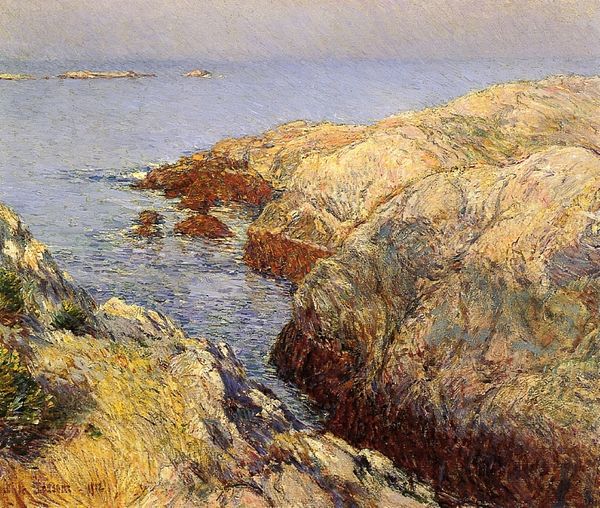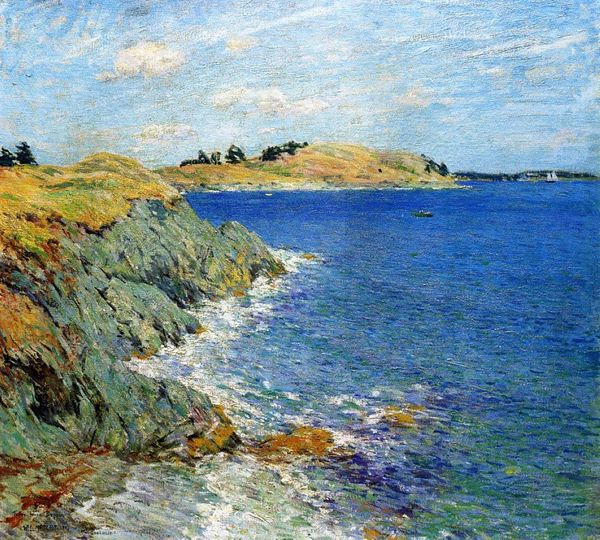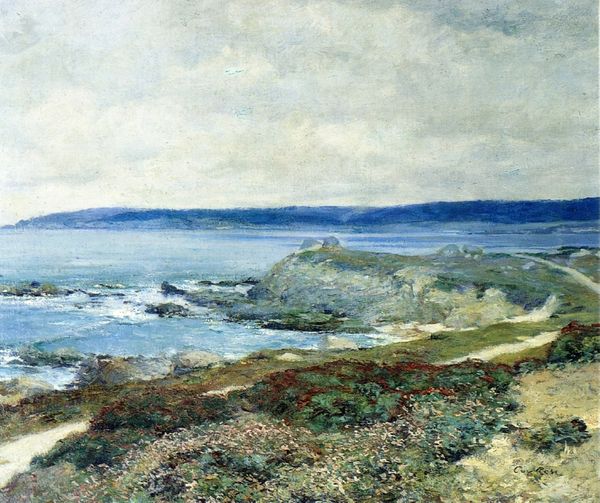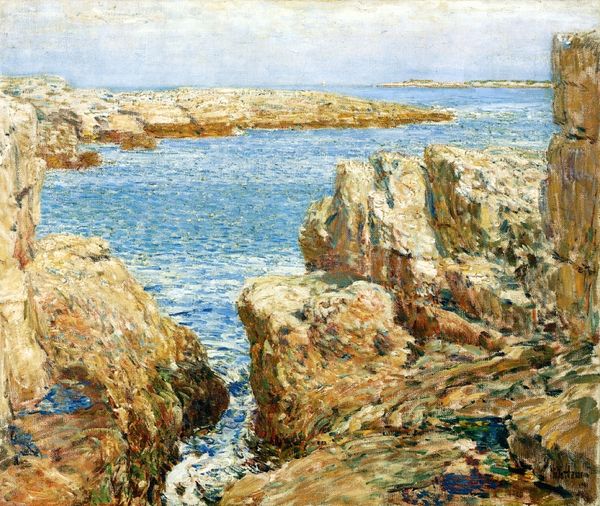
painting, plein-air, oil-paint
#
painting
#
impressionism
#
plein-air
#
oil-paint
#
landscape
#
impressionist landscape
#
ocean
#
rock
#
mountain
#
seascape
#
water
#
post-impressionism
#
sea
Dimensions: 68 x 106 cm
Copyright: Public domain
Editor: Looking at Theo van Rysselberghe's *The Pointe de per Kiridec at Roscoff*, which appears to be an oil painting, I’m immediately struck by the intense detail and the almost photographic realism achieved through those tiny dots of paint. It's a beautiful coastal scene, but there's also a sense of stillness, like a captured moment in time. How do you interpret this work in its historical context? Curator: That stillness you perceive is fascinating. Post-Impressionism, particularly Pointillism, was striving for a new kind of scientific objectivity in painting. Van Rysselberghe, influenced by Seurat and Signac, embraced this method, but what was the effect of portraying landscape, a typically Romantic subject, through this quasi-scientific lens? Editor: So, instead of pure emotional response, it's almost like he's analyzing the scene? Does this shift have political implications for how art was viewed then? Curator: Precisely! Consider the socio-political landscape of the late 19th century. With growing industrialization and scientific advancement, there was a desire to bring order and understanding to the world, and that extended to the art world as well. These artists believed they were creating a more "truthful" representation of reality. Were they truly objective, though, or was this claim to objectivity a reflection of their own societal positions and biases? What role do you think public art institutions like museums played in promoting or questioning these viewpoints? Editor: That makes me think about how museums themselves validated certain artistic approaches and suppressed others, creating a kind of official art history. Thanks for making me think critically about how even something that seems apolitical like a landscape painting reflects cultural power structures. Curator: Exactly. Reflecting on the complex interplay between artistic style, historical context, and institutional power gives us a richer understanding of this painting, and, indeed, of art history itself. It's about acknowledging that art never exists in a vacuum.
Comments
No comments
Be the first to comment and join the conversation on the ultimate creative platform.
